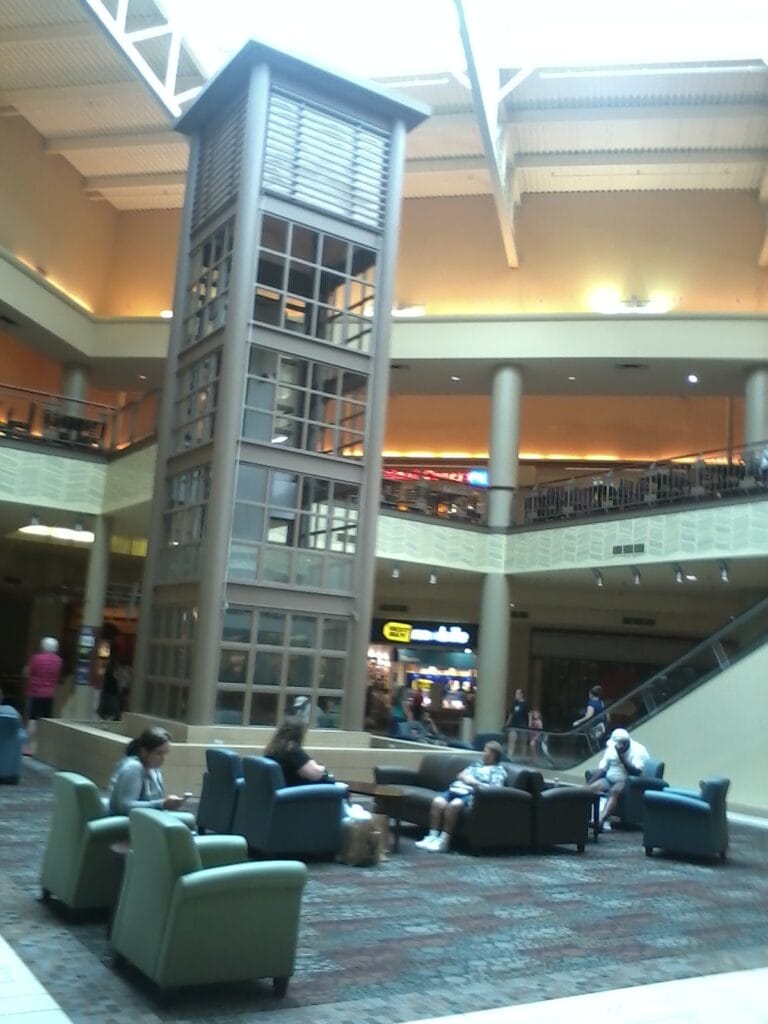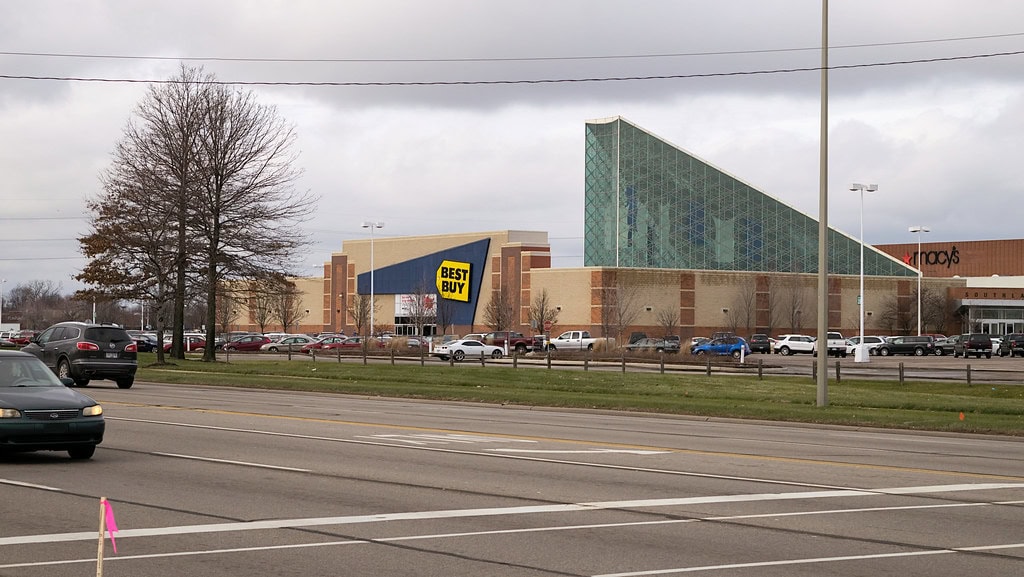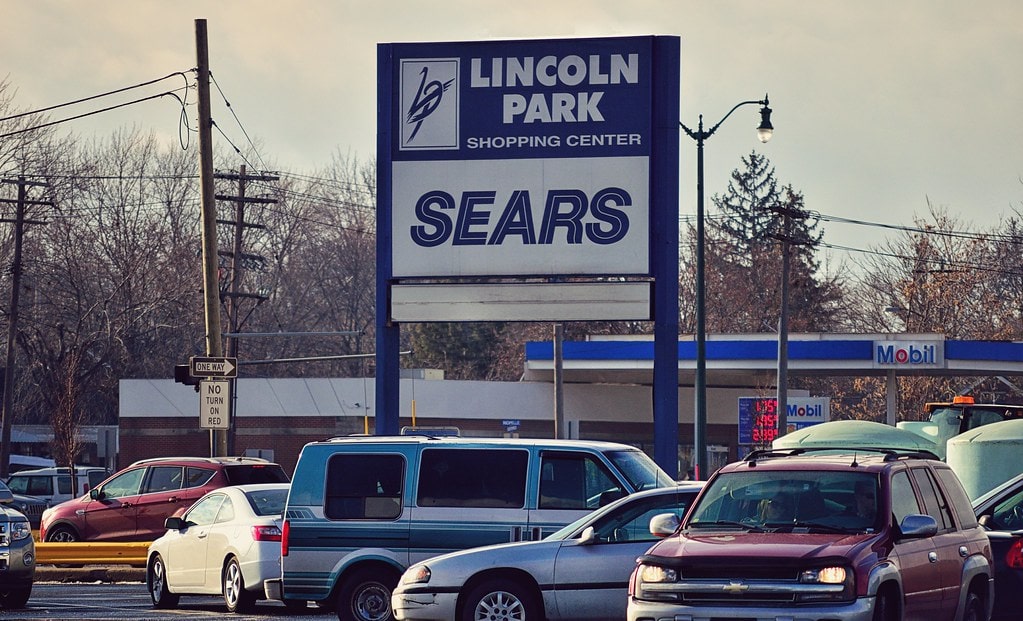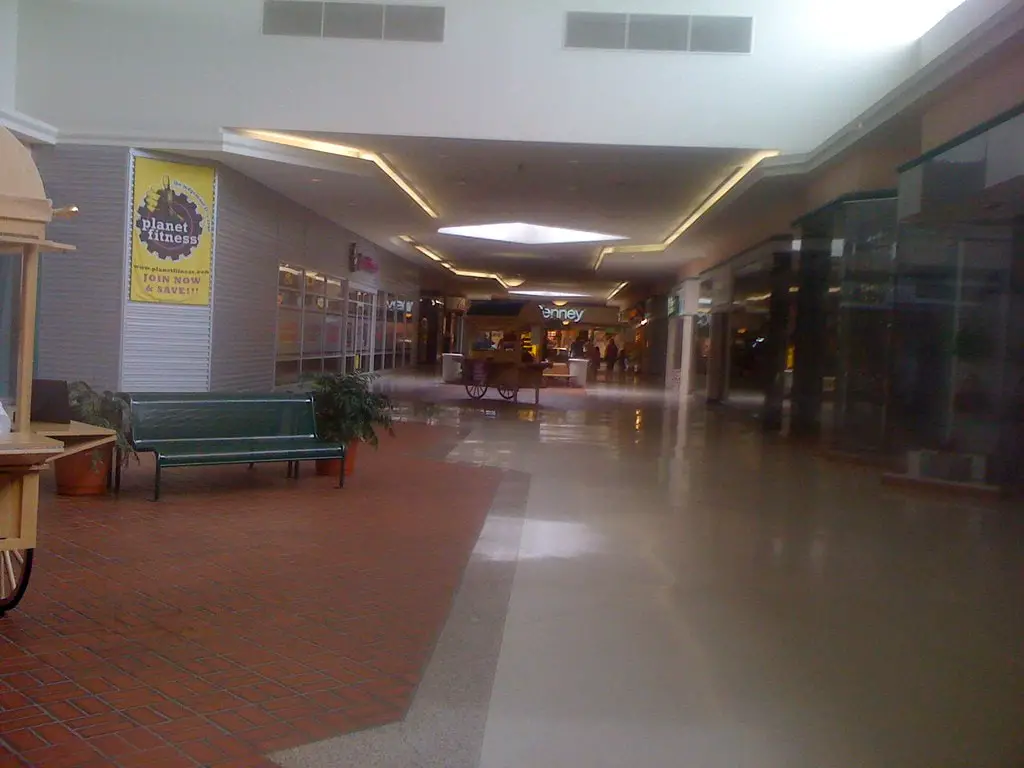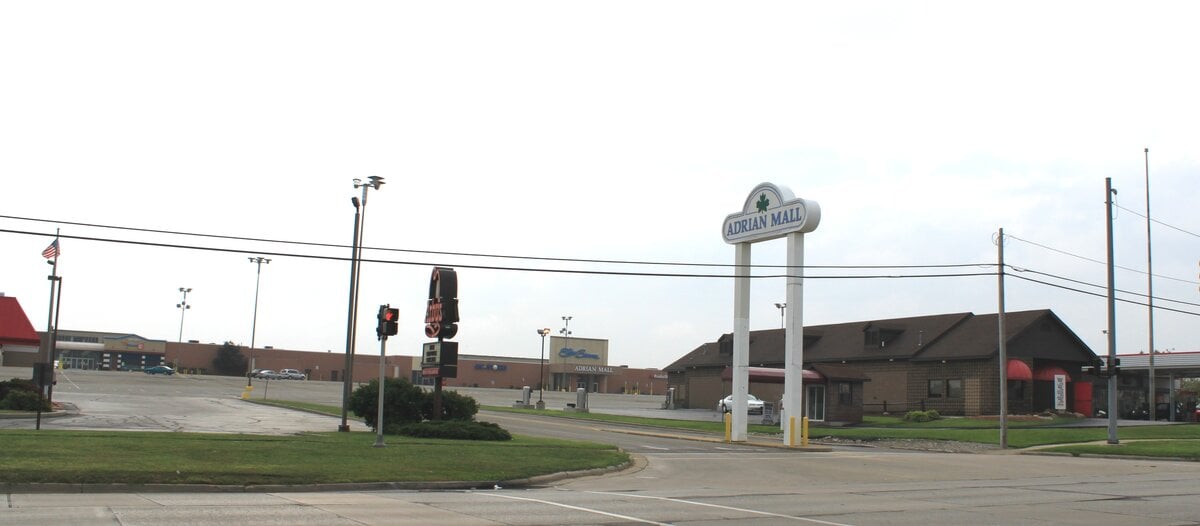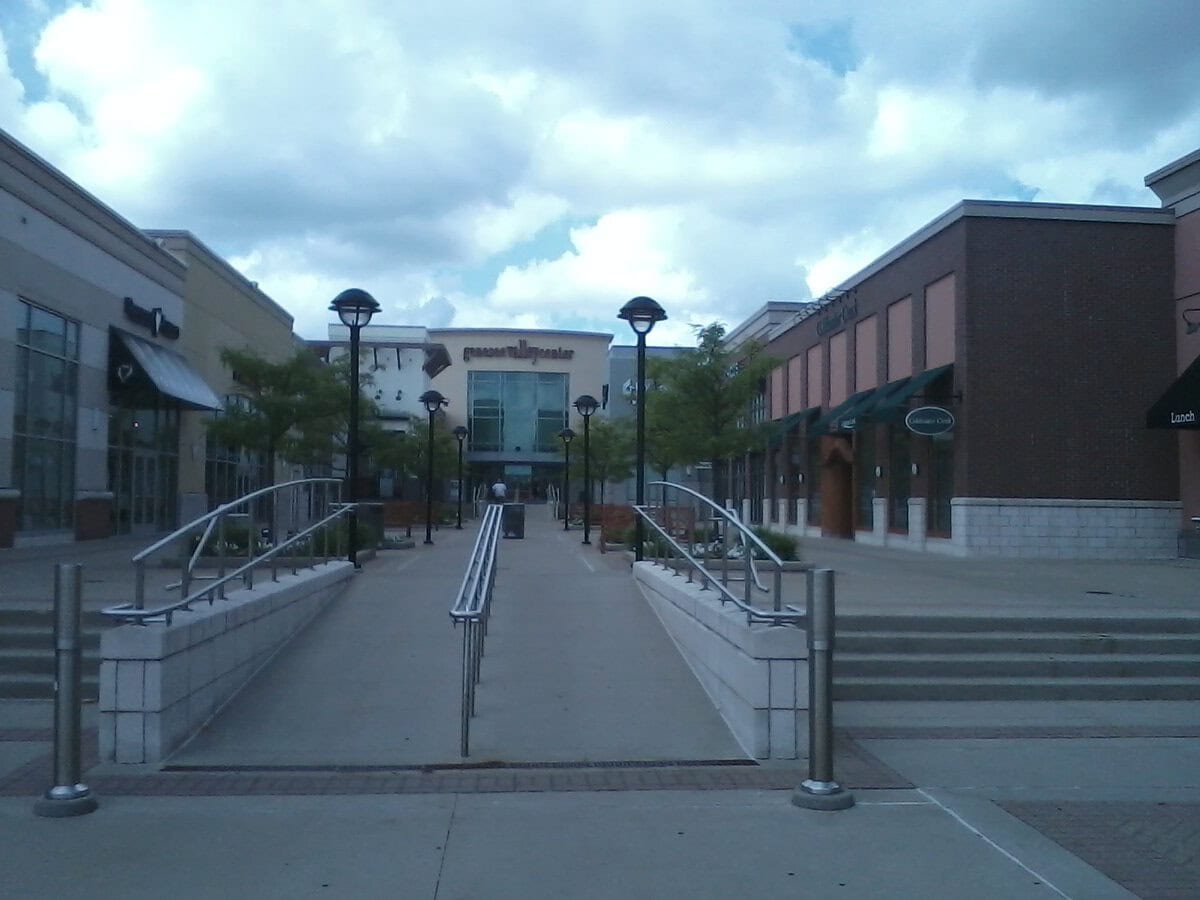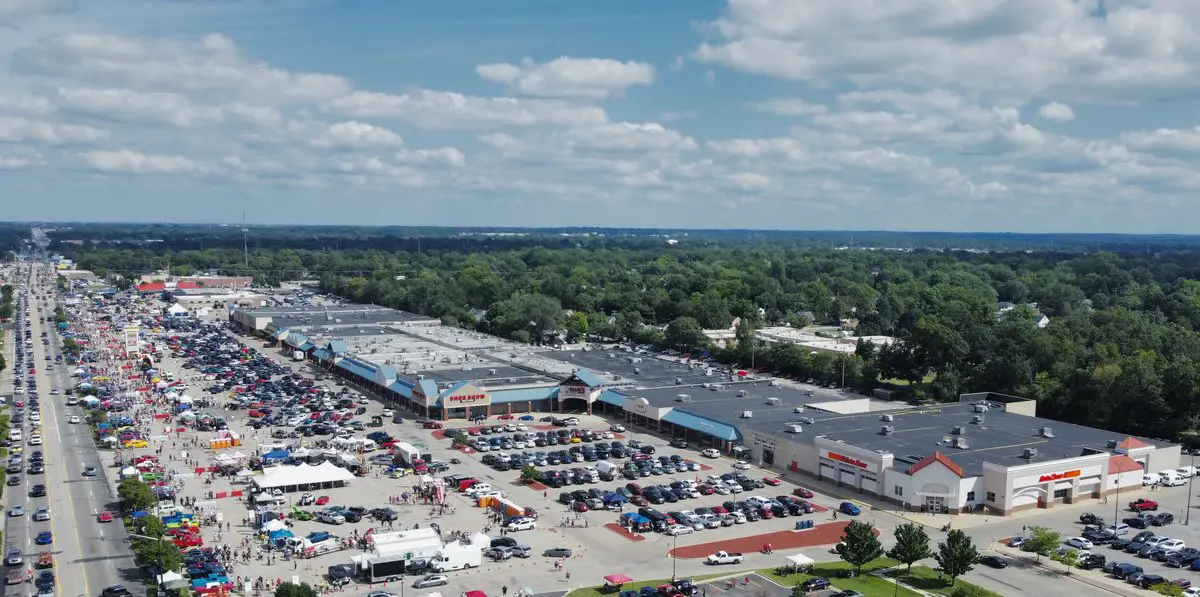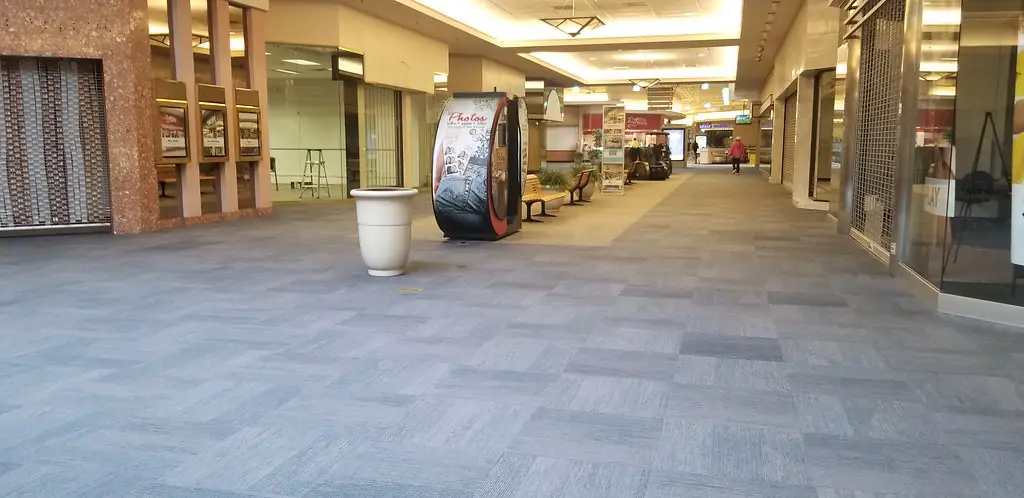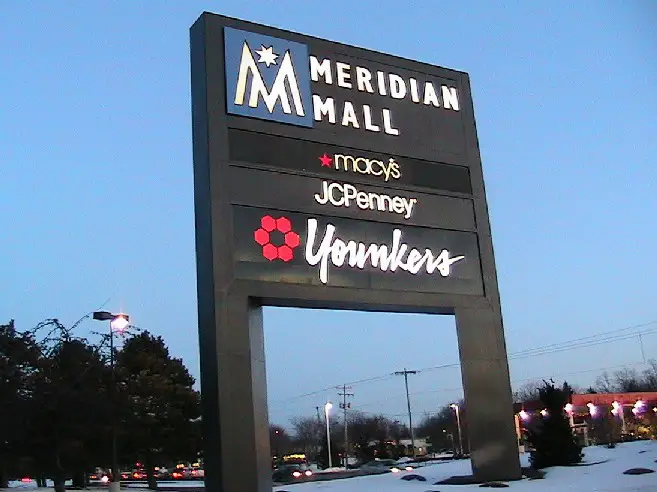A Mall Built for an Era That No Longer Exists
The automatic doors slide open, releasing a breath of climate-controlled air. Inside, the echo of footsteps bounces off the high ceilings.
A few shoppers wander past storefronts, some shuttered, others offering discounts big enough to make you wonder how long they’ll last.
The scent of cinnamon pretzels lingers near the food court. In the 1970s, this place would have been packed.
Genesee Valley Center opened on August 8, 1970, a project backed by Shopping Centers, Inc., a division of Hudson’s department stores.
It wasn’t just another mall—it was Flint’s largest enclosed shopping destination, a response to the growing suburban population and shifting retail trends.
Sears was the first to open in May 1970, followed by Hudson’s two months later. At the time, Hudson’s location was the largest outside of Detroit.
Between them sat a single-story corridor lined with 56 original tenants, including Hamady Brothers, Cunningham Drug, and a Woolworth dime store.
Malls like this were built for a different kind of economy. Flint was booming. General Motors was running multiple plants in the area, and the city’s workforce had disposable income to spend.
Shopping wasn’t just about buying things; it was an event. Families made a day of it, and teens used it as a weekend hangout.
The new mall at Miller and Linden Roads gave people another reason to move outside the city limits.
For a long time, it worked. Malls thrived, stores opened, and the parking lot filled up every weekend.
There were always things to do in Flint, Michigan, and shopping here was at the top of the list.
But the golden age wouldn’t last forever. The economy changed, shopping habits shifted, and the cracks had already started to show.
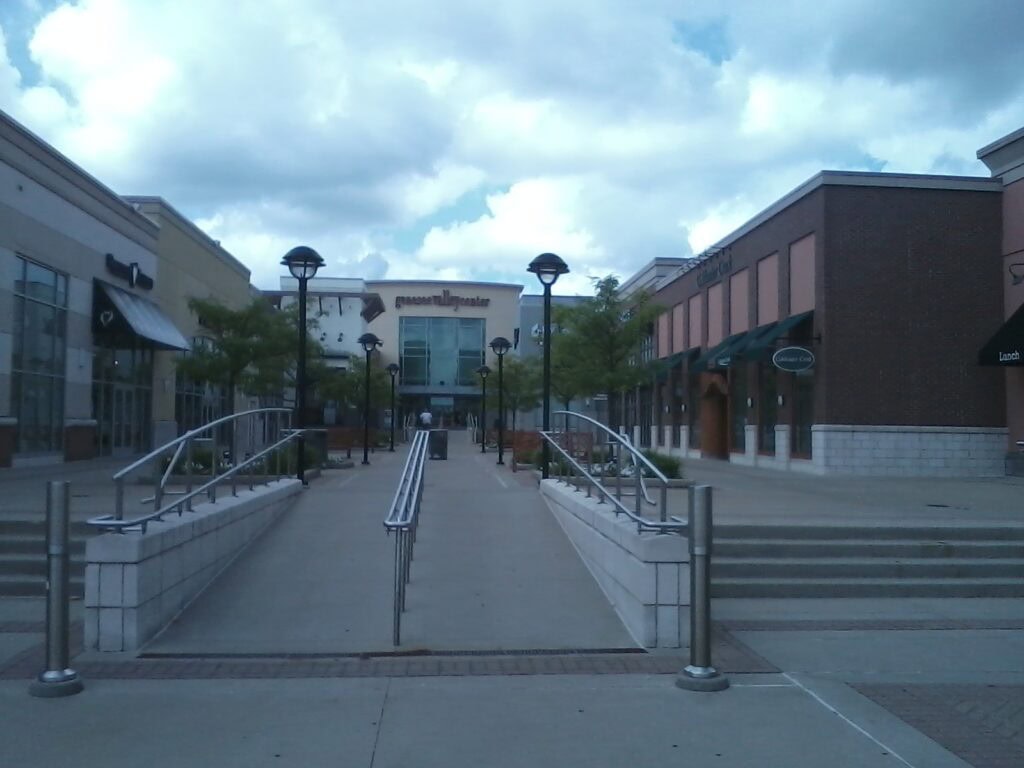
Expansion, Evolution, and the Golden Age
The sound of shopping bags rustling, cash registers chiming, and kids laughing in the food court—it was the soundtrack of a mall at its peak.
By the late 1970s, Genesee Valley Center had become the largest shopping destination north of Detroit, but the demand for more space kept growing.
In 1979, a new eastern wing opened, adding JCPenney as the third anchor. The expansion stretched the mall’s footprint, making room for more retailers, including The Limited, Waldenbooks, and Chess King.
By the time the 1987 food court renovation was completed, the mall had over one million square feet of retail space, with seating for hundreds under a 40-foot skylight.
Fast food chains like Sbarro, Taco Bell, and Orange Julius packed the mezzanine.
The 1990s pushed the mall into another phase of growth. In 1993, the northern wing was extended again, bringing in Mervyn’s and Montgomery Ward as new anchors.
More national brands arrived—Gap, Abercrombie & Fitch, and Foot Locker—filling the storefronts.
At 1.3 million square feet, Genesee Valley Center had outgrown its original blueprint.
The cracks were already showing. Montgomery Ward closed in 2001, another casualty of a failing chain. Its massive space sat empty, a hollow corner in a mall built for movement.
For years, nothing replaced it. Shoppers passed by darkened windows, a reminder that retail was changing—and Genesee Valley Center would have to change with it.
The Slow Unraveling of Genesee Valley Center
After Montgomery Ward’s nationwide shutdown in 2001, its former space was demolished in 2005 to make way for a new concept—Outdoor Village.
The addition, which opened in 2006, was designed to attract more foot traffic by blending traditional mall retailers with open-air storefronts.
A new Barnes & Noble took over as a key tenant, replacing the smaller B. Dalton Bookseller inside the mall. But Outdoor Village never became the high-traffic destination the mall hoped for.
Foot traffic slowed, and some storefronts sat vacant before long.
By 2006, Mervyn’s also pulled out of the Michigan market. The store sat vacant for a year before Burlington Coat Factory took over in 2007.
Around the same time, the once-thriving Woolworth space transitioned through multiple tenants—Steve & Barry’s, Wear District, and eventually Shoe Dept.
Encore. The mall still had its major anchors—Macy’s, JCPenney, Burlington, and Sears—but the smaller retailers were struggling to keep up with the rise of big-box stores and online shopping.
Planet Fitness moved in around 2015, taking over a spot in the former Burlington Coat Factory wing.
The mall was leaning toward a different kind of tenant—gyms, entertainment spaces, and non-traditional retailers.
A few years later, in 2017, an H&M opened near JCPenney, bringing a wave of fast fashion. But the boost was temporary.
More losses followed in the late 2010s. Burlington relocated in 2018, choosing a strip mall over Genesee Valley Center.
The same year, Sears shut down, another long-time anchor leaving behind a dark, empty storefront.
The mall tried to pivot by opening Play Big, an indoor playground and arcade, in the former Burlington space.
The move aimed to attract families, but it didn’t last. By 2023, Play Big had also closed its doors.
Retail wasn’t just changing—it was leaving. More stores were downsized or disappeared altogether. By 2019, the Forever 21 store moved into a larger space near Macy’s, only to close later that same year.
If you walk through the mall in 2025, the vacancies stand out. The last few big retailers are holding on, but the future feels uncertain.
What Happens Next?
The latest blow came in January 2025. Macy’s announced it would be closing its Genesee Valley Center location in the first quarter of the year, leaving JCPenney as the last remaining anchor.
For a mall that once boasted four major department stores, the change was hard to ignore.
Ownership had already changed hands multiple times. Jones Lang LaSalle sold the property to Spinoso Group in 2012.
In 2019, Genesee Valley Center changed hands. It was snapped up by Namdar Realty Group, a firm known for buying struggling malls and letting them drift.
Walking through the mall, it’s easy to see why people are worried. Vacant stores outnumber open ones, and the closures aren’t just small specialty shops.
The Buckle, Rue 21, Express Factory Outlet, and more have left, leaving behind faded signs and locked gates.
The mall’s food court, once the place to recharge between shopping sprees, has more empty spaces than vendors.
For now, Genesee Valley Center is still standing. The doors are open. JCPenney is still there.
Several stores remain. But with Macy’s gone, the future feels more uncertain than ever.
Would the space be redeveloped? Would it be turned into a mixed-use property?
Or would it follow the path of so many other struggling malls—shuttered, demolished, and replaced with something entirely different?
